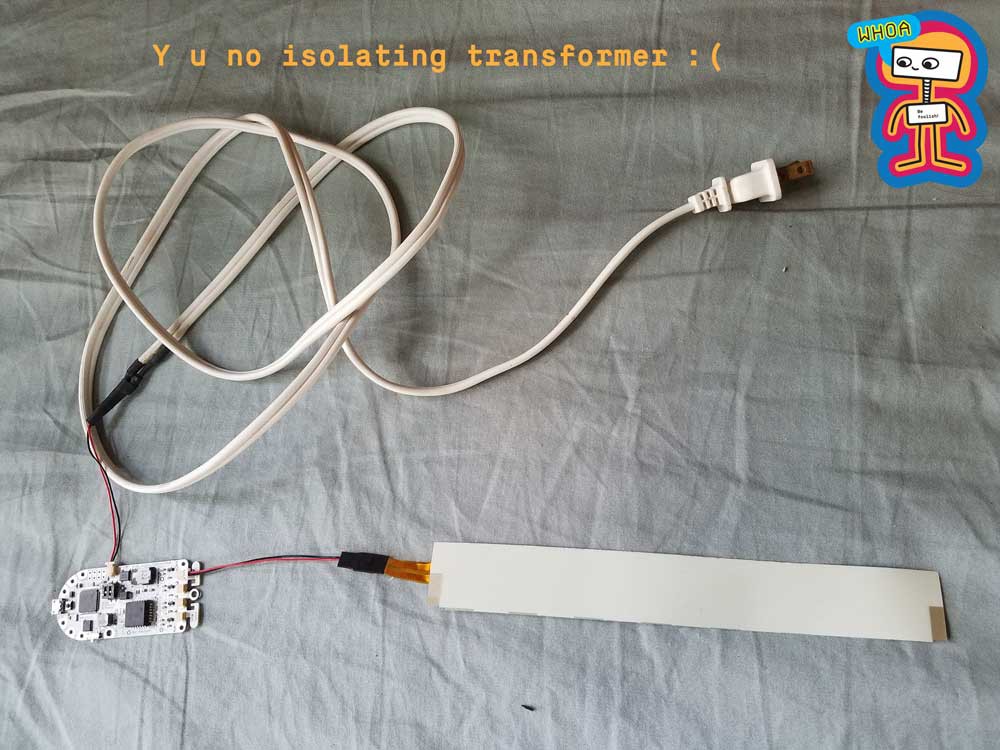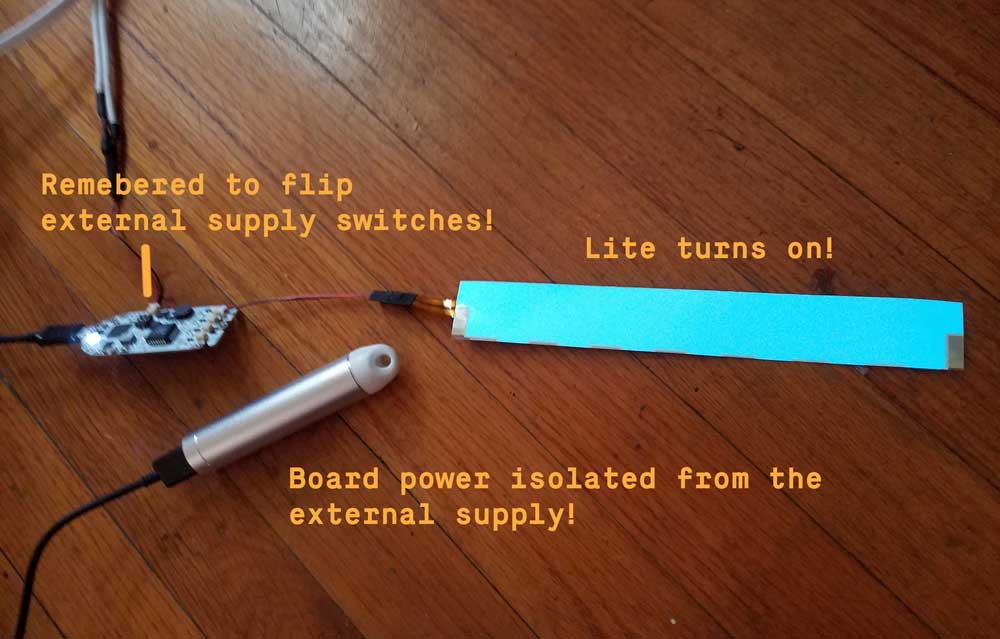Here we're going to document our first experiment with connecting an external supply.
It worked, but it is a BAD idea (for a few reasons that we will detail here). Please learn from our foolish explorations - don't electrocute anyone!

Ok, so what are we looking at here. We are looking at a regular american power plug, that fits into a supply that provides ~120V (RMS) at 60Hz. We attached a resistor (and didn't include a TVS diode because there is one on the board and because the voltage in the wall shouldn't exceed 170V as long as there isn't a spike). We flip the supply switches on the board, and connect this as an external supply.
Okaaaay, so why is this a BAD idea?
The main issue is that because we are driving the panel directly from the wall, if you touch the panel then there is a potential to create a ground loop through your body, because there is no galvanic isolation between the supply and your feet.
BAD BAD BAD!
This is particularly worrisome because the board is exposed, and so it's easy to touch an exposed lead, and because the panel in question isn't sealed/laminated, and so can shock you when you touch the edges of it (as has happened to us, particularly when touched with sweaty/moist hands).
If you want to draw power from the wall, it is much better practice to pass the signal through an isolating transformer.
That said, EL materials really glow much more effectively when driven at a higher frequency than 60Hz, and so it is better to use a more specialized supply, as we will describe in later posts!
-----------------
There are, however, some redeeming things about this experiment, as we illustrate in the image below:

 fool
fool
Discussions
Become a Hackaday.io Member
Create an account to leave a comment. Already have an account? Log In.